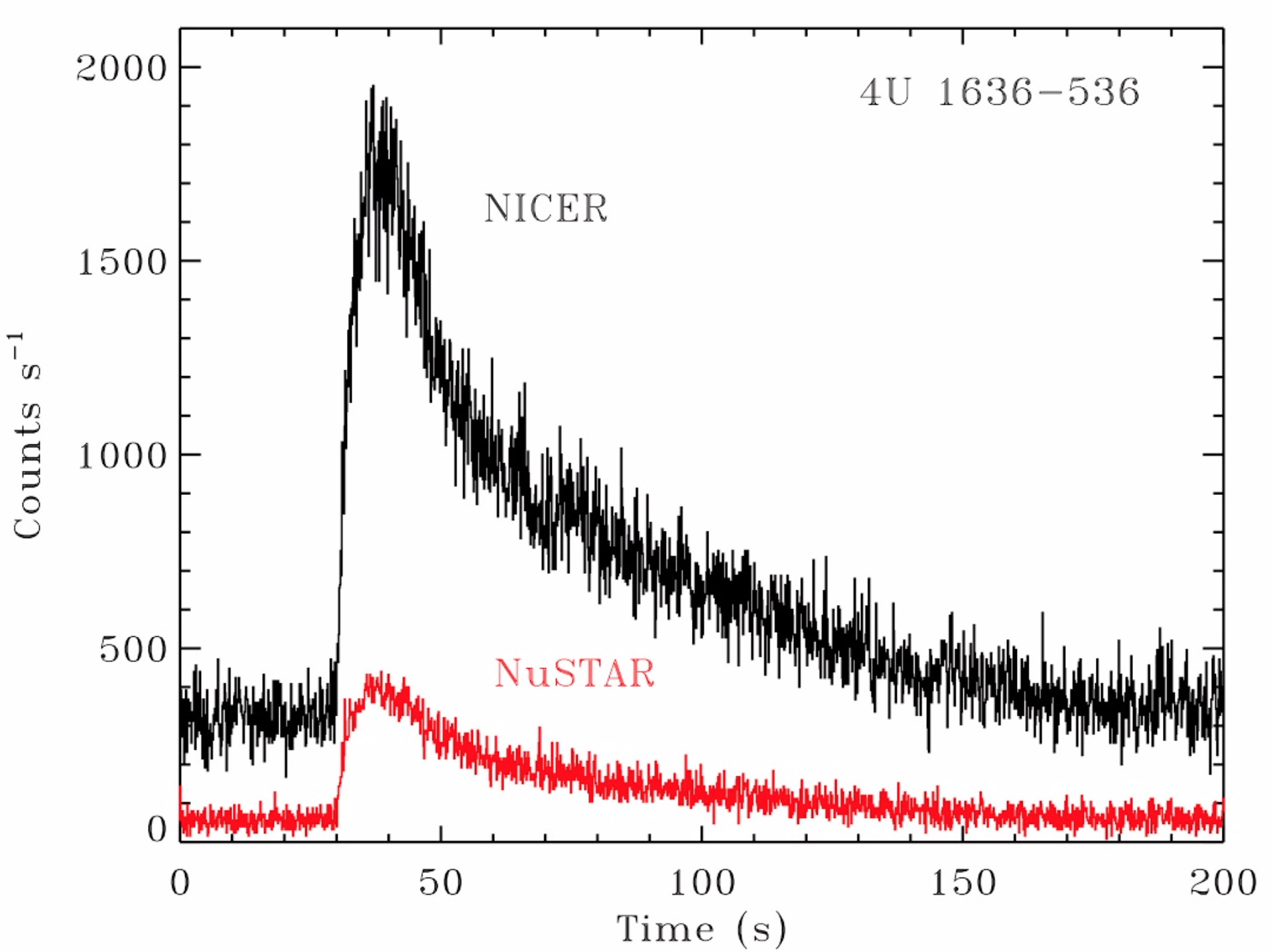NICER / ISS Science Nugget for July 18, 2019NICER and NuSTAR simultaneously catch four X-ray bursts from 4U 1636-536Neutron stars that are accumulating matter from their binary stellar companions, a process known as accretion, are of keen interest to NICER. Some of these neutron stars produce powerful X-ray flashes, called X-ray bursts, as the accreted layer of matter gets compressed and eventually undergoes rapid thermonuclear fusion, the same energy source that powers the Sun. These bursts provide a rare opportunity to closely study the neutron star and its environs. Matter drawn off the neutron star's companion forms a disk of material around the neutron star, and slowly spirals through this accretion disk toward the neutron star, like water circling a drain. Some of the X-ray light from an X-ray burst will brightly illuminate the accretion disk and its surroundings, providing a unique way to study the accretion process and how such powerful X-ray bursts may affect it. Recently, NICER carried out a series of observations of the accreting neutron star binary 4U 1636-536, a frequent producer of X-ray bursts, to probe the neutron star and its accretion disk in this way. For this measurement, broader X-ray energy coverage is better, so NICER teamed up with another NASA X-ray observatory, NuSTAR, which can see higher energy X-rays (above 10 keV) than NICER, in order to catch the broadest range of X-rays from each burst. Coordinating such observations can be tricky due to the different observing constraints of each mission, but NICER and NuSTAR managed to catch four X-ray bursts simultaneously. The accompanying figure shows one of the X-ray bursts seen with NICER (black) and NuSTAR (red). Detailed study of the NICER and NuSTAR spectral data will provide new views of the accretion process in this system.
NICER
|



